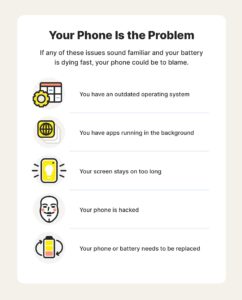Battery connectors play a crucial role in powering our modern devices and machinery. Whether you’re tinkering with electronics or working on a large-scale project, understanding what battery connectors are called is essential. So, what are battery connectors called? They are commonly referred to as battery terminals or battery cable connectors. These small yet vital components ensure a secure and efficient connection between batteries and the devices they power. In this blog article, we will delve deeper into the world of battery connectors, exploring their types, functions, and importance in various industries. Join us as we shed light on this fundamental yet often overlooked aspect of electrical systems.
What Are Battery Connectors Called?
Battery connectors are essential components used for connecting batteries to various devices and systems. They serve as the interface between the power source and the target device, allowing for the transfer of electrical energy. Battery connectors come in different shapes, sizes, and designs, each serving specific purposes based on the application requirements.
Types of Battery Connectors
Battery connectors can be broadly categorized into two main types: terminal connectors and contact connectors. Let’s explore each type in more detail.
1. Terminal Connectors
Terminal connectors, as the name suggests, are used to connect the battery terminal directly. These connectors typically consist of a male and female end, allowing for a secure and reliable electrical connection. Some common types of terminal connectors include:
- Post Connectors: Post connectors are designed to connect to a battery post or terminal directly. They are commonly used in automotive applications.
- Ring Terminals: Ring terminals feature a circular shape with a hole in the center, allowing them to be easily attached to studs or bolts. They are commonly used in automotive and marine applications.
- Spade Terminals: Spade terminals, also known as blade terminals, have a flat, rectangular shape with a tab for easy connection. They are commonly used in household appliances and automotive applications.
2. Contact Connectors
Contact connectors, on the other hand, create electrical connections through contact points rather than direct attachment to battery terminals. Here are a few common types of contact connectors:
- Alligator Clips: Alligator clips are spring-loaded clips that can be easily attached or detached. They feature teeth-like jaws that provide a secure grip on the battery terminals. Alligator clips are commonly used in laboratory setups, testing equipment, and temporary connections.
- Banana Plugs: Banana plugs are male connectors with a cylindrical shape and a pin at the center. They are widely used in electronic equipment and provide a convenient plug-and-play connection.
- Anderson Powerpole Connectors: Anderson Powerpole connectors are versatile connectors commonly used in power distribution applications, including amateur radio, robotics, and electric vehicles. They feature a genderless design, allowing for easy connection and disconnection.
Factors to Consider When Choosing Battery Connectors
Selecting the right battery connector for a specific application requires careful consideration of several factors. Here are some key factors to keep in mind:
1. Current Rating
The current rating of a battery connector refers to the maximum current it can handle without overheating or causing a voltage drop. It is important to choose a connector that can handle the anticipated current requirements of the system to prevent damage and ensure efficient power transfer.
2. Voltage Rating
The voltage rating of a battery connector indicates the maximum voltage it can safely withstand. It is crucial to select a connector that can handle the voltage levels of the system to avoid electrical breakdown or insulation failure.
3. Contact Resistance
Contact resistance is the resistance encountered between the battery connector and the mating connector. Lower contact resistance ensures minimal power loss and efficient energy transfer. High-quality connectors with low contact resistance are ideal for applications that require high power or low voltage drop.
4. Durability and Reliability
Battery connectors should be durable and capable of withstanding harsh environmental conditions, temperature variations, and mechanical stress. Reliable connectors ensure a consistent electrical connection, preventing power interruptions or failures.
5. Ease of Connection and Disconnection
Connectors that are easy to connect and disconnect provide convenience in applications that require frequent battery replacement or maintenance. Quick and secure connections save time and effort, especially in industries where efficiency is paramount.
6. Application-Specific Requirements
Different applications may have specific requirements such as size limitations, sealing properties (for waterproofing), or specific certifications for hazardous environments. It is important to consider these application-specific requirements when selecting battery connectors.
Battery connectors play a crucial role in providing a reliable and efficient electrical connection between batteries and devices or systems. Understanding the different types of battery connectors and considering the factors mentioned above allows for the selection of the most suitable connector for a specific application.
Whether it’s post connectors, ring terminals, alligator clips, or Anderson Powerpole connectors, each type offers unique benefits and is designed for specific applications. By choosing the right battery connector, you can ensure optimal power transfer and enhance the overall performance and reliability of your electrical system.
Frequently Asked Questions
What are battery connectors called?
Battery connectors are commonly referred to as battery terminals or battery contacts.
What is the purpose of battery connectors?
Battery connectors are used to establish a secure electrical connection between a battery and an electrical device or system. They allow the flow of electricity from the battery to power the device or system.
What types of battery connectors are available?
There are several types of battery connectors available, including bolt-on terminals, post terminals, clamp-on terminals, and blade terminals. These connectors vary in design and are chosen based on the specific requirements of the battery and the device it powers.
Are battery connectors standardized?
While there are some industry standards for battery connectors, they are not fully standardized across all battery types and manufacturers. Different batteries may require different connector types or configurations.
How do I choose the right battery connector?
When choosing a battery connector, it is important to consider factors such as the battery type, current requirements, space limitations, and environmental conditions. Consulting the battery manufacturer’s specifications or seeking professional advice can help in selecting the appropriate connector.
Can battery connectors be replaced or repaired?
Yes, battery connectors can be replaced or repaired if they become damaged or worn out. However, it is essential to follow proper safety precautions and consult a professional if unsure about the replacement or repair process.
Final Thoughts
Battery connectors are the essential components that join batteries together or connect them to various devices. They allow for the transfer of electrical energy, ensuring a reliable and secure connection. These connectors come in various types, including blade connectors, bullet connectors, and XT connectors, to name a few. The primary function of battery connectors is to establish a stable and efficient electrical connection between batteries and devices, enabling the smooth flow of power. So, if you ever find yourself wondering what battery connectors are called, now you know the answer.




